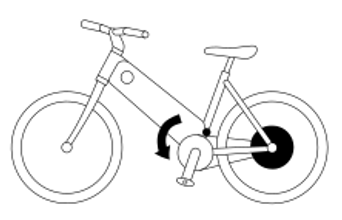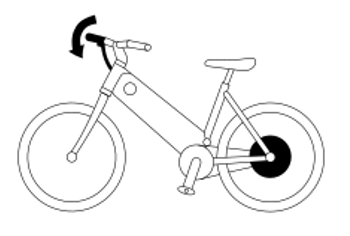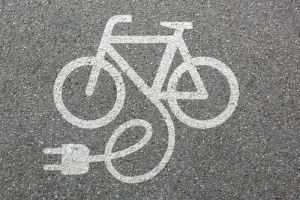Enter e-bikes, the modern solution to dauntingly long and hilly rides, getting you from point A to B in a reasonable time, while staying fit to boot. With that to set the scene, welcome to our starter guide to electric bikes. In this Canstar Blue guide, we’ll share all the basics you need to know, from how they work to which brands are available in Australia and the expected costs.
On this page:
What is an electric bike?
An electric bike, or e-bike, is much like a classic pedal bike, just with a motor attached for extra propulsion. Generally speaking, there are two types of electric bikes, a pedal-assist (or pedelec) or a power-assisted bike, which work somewhat like an electric scooter. Of the two, the former is much more popular.
What are the advantages of an electric bike?

There are a few notable advantages to owning an electric bike. These are:
- More Exercise: Riding an electric bike on your daily commute is better for your than driving as it is promotes cardiorespiratory fitness.
- Saves Money: Electric bikes run off batteries and electricity, which means e-bike riders don’t need to pay for as much fuel (if any) as drivers.
- Reduces Fuel Emissions: In addition to saving riders money, the lack of fuel needed for e-bikes also means that riders contribute less pollution to the environment.
- Versatile: E-bikes offer riders the option of using the engine or not, so if the battery does die before reaching a destination, riders can simply treat the bike as an ordinary cycle.
- Longer Travel Capabilities: Thanks to the added battery power, e-bikes can take riders a lot further in their journeys that normal bikes, making them perfect for commuting to and from work or extended distances.
What e-bikes can you get in Australia?
In Australia, there’s an abundance of electric bike brands to choose from, some made locally and others imported from leading e-bike manufacturers around the world. While it’s unlikely you’ll find any one shop that stocks all of the brands below, you’ll be sure to recognise some of these names when you go out for a browse.
| A2B
ALDI Aseako BBB BH Emotion Cell Cleverley Cube DiroDi Dyson Earth EcoRide Electra eTourer eZee FiSHAW Focus Gazelle Gepida Giant Go Cycle Grace Haibike Kalkhoff Kmart Kristall |
Leitner
Lekker Merida Michael Blast Greaser Momentum Electric Norco Orbea Ordica Pedego Promovec Reef Reid Riese & Müller Scott Shogun SmartMotion Specialized Staiger Stealth Tebaco Tern Trek Vallkree Velo de Ville Yuba Wisper XDS |
Are electric bikes legal?
Yes, as long as you’re wearing a helmet. However, Australian bike laws dictate that it’s illegal to ride an electric bike on the road or in bike lanes with a pedal assist system or a power output of more than 250W. For bikes without the pedal assist, this drops to 200W. In both cases, the motor speed must be limited to 25km/h. These laws don’t apply to off-roading.
You might also be interested in:
How do electric bikes work?
We’re not engineers, mechanics or anything of like, but in absolute layman’s terms, here’s what’s to know about how electric bikes work.

- Pedelec bikes: Pedal-powered bikes, or pedelecs, work by only engaging a motor when the rider is pedalling. What this means is that your riding will be assisted by the motor, making it easier to pedal when necessary, but that you’ll still have to use your leg muscles to make it go.

- Power-assisted bikes: Even though they’re less popular, this is what comes to mind when most people (who don’t ride them) think of electric bikes. To make these bikes move, pedalling isn’t required, working more like an electric scooter using hand-controlled acceleration. Keep in mind that even though pedalling may not be required, most riders on this sort of bike will use manual pedalling and their accelerator to go along.
How do you charge an electric bike?
With most e-bikes, you’ll find that the battery pack is removable, which is then connected to a cable and plugged into a wall much like a laptop. To elongate the life of your electric bike, some manufacturers recommend you don’t regularly let your battery drop to 0 per cent, topping it up with a charge when it gets under 50 per cent.
How fast do electric bikes go?
Electric road bikes in Australia should be designed to cap out at 25km/h, but that doesn’t mean you can’t pedal past that speed. How fast you’ll go with an electric bike will depend entirely on your personal circumstances. Things like air resistance, tyre pressure and, more obviously, your path will play a huge role in how fast you roll.
Do you need a licence to ride an electric bike?
In Australia, no. You need a licence if you’re going to power an electric scooter over 50cc in all states, which come with a motor much more powerful than what you’ll see on an e-bike.
How much do electric bikes cost?

There’s a big gap between the cheapest and most expensive electric bikes. They can vary between just under a thousand dollars brand new to over $15,000. Generally speaking, if you’re after a regular commuter bike, it’s unlikely you’ll reach the tail end of that bracket- you’re looking at a few grand for a well-known brand producing a reliable product.
Second hand electric bikes
When buying a second hand electric bike, the same rules apply as they would to any other preloved item. Make sure it’s functioning and will continue to do so in the near future and you should be good to go. Unfortunately, an uninformed buyer may not know what to look out for, so to help out we’ve put together a list of questions you should ask when you go and inspect:
- When did you buy the bike?
- Do you have proof of purchase?
- When was the last time the bike was serviced?
- Are there any faults I need to know about?
- How often did you use the bike?
- How many km’s are on the odometer?
- Have you switched out any of the parts?
- Why are you selling the bike?
Can I make my own electric bike?
Yes, you can, though don’t expect it to be cheap. Some e-bike shops will sell you what’s called a conversion kit, typically coming with a motor laced into a rim, battery, charger and instruction manual to help you install it. These kits can range anywhere from a few hundred to a few thousand, which is ultimately cheaper than buying a pre-built e-bike, but a little more effort.
Red Energy Electric Vehicle Plan
Here is Red Energy’s Electric Vehicle Plan on our database that includes a link to the retailer’s website for further details. These costs are based on the Ausgrid network in Sydney but prices may vary depending on your circumstances. This comparison assumes general energy usage of 3900kWh/year for a residential customer on a single rate tariff. Please use our comparison tool for a specific comparison in your area. Our database may not cover all deals in your area. As always, check all details of any plan directly with the retailer before making a purchase decision.
Here is Red Energy’s Electric Vehicle Plan on our database that includes a link to the retailer’s website for further details. These costs are based on the Citipower network in Melbourne but prices may vary depending on your circumstances. This comparison assumes general energy usage of 4000kWh/year for a residential customer on a single rate tariff. Please use our comparison tool for a specific comparison in your area. Our database may not cover all deals in your area. As always, check all details of any plan directly with the retailer before making a purchase decision.
Here is Red Energy’s Electric Vehicle Plan on our database that includes a link to the retailer’s website for further details. These costs are based on the Energex network in Brisbane but prices may vary depending on your circumstances. This comparison assumes general energy usage of 4600kWh/year for a residential customer on a single rate tariff. Please use our comparison tool for a specific comparison in your area. Our database may not cover all deals in your area. As always, check all details of any plan directly with the retailer before making a purchase decision.
Here is Red Energy’s Electric Vehicle Plan on our database that includes a link to the retailer’s website for further details. These costs are based on the SA Power network in Adelaide but prices may vary depending on your circumstances. This comparison assumes general energy usage of 4000kWh/year for a residential customer on a single rate tariff. Please use our comparison tool for a specific comparison in your area. Our database may not cover all deals in your area. As always, check all details of any plan directly with the retailer before making a purchase decision.
Is it worth getting an electric bike?
Electric bikes do offer quite a few advantages; they are better for your health, help reduce fuel emissions pollution and can help you save money. However, they may not be the greatest convenience to charge and ride for people in rural and remote communities and as such, people who live within cities or surrounding areas are probably more likely to reap the most benefits from getting an e-bike. Before investing in an e-bike, its best to consider the length of travel, charging implications and potential savings to ensure you are maximising your return. If you are interested in purchasing an e-bike, check out our e-bike brands page for a full run down of some of the brands on offer in Australia.
Image credits: Alex Emanuel Koch/Shutterstock.com, Markus Mainka/Shutterstock.com, Pro Symbols/Shutterstock.com, moreimages/Shutterstock.com
Original Author: Monika Gudova




Share this article